Once capital of Stephen F. Austin's colony, San Felipe de Austin celebrates bicentennial
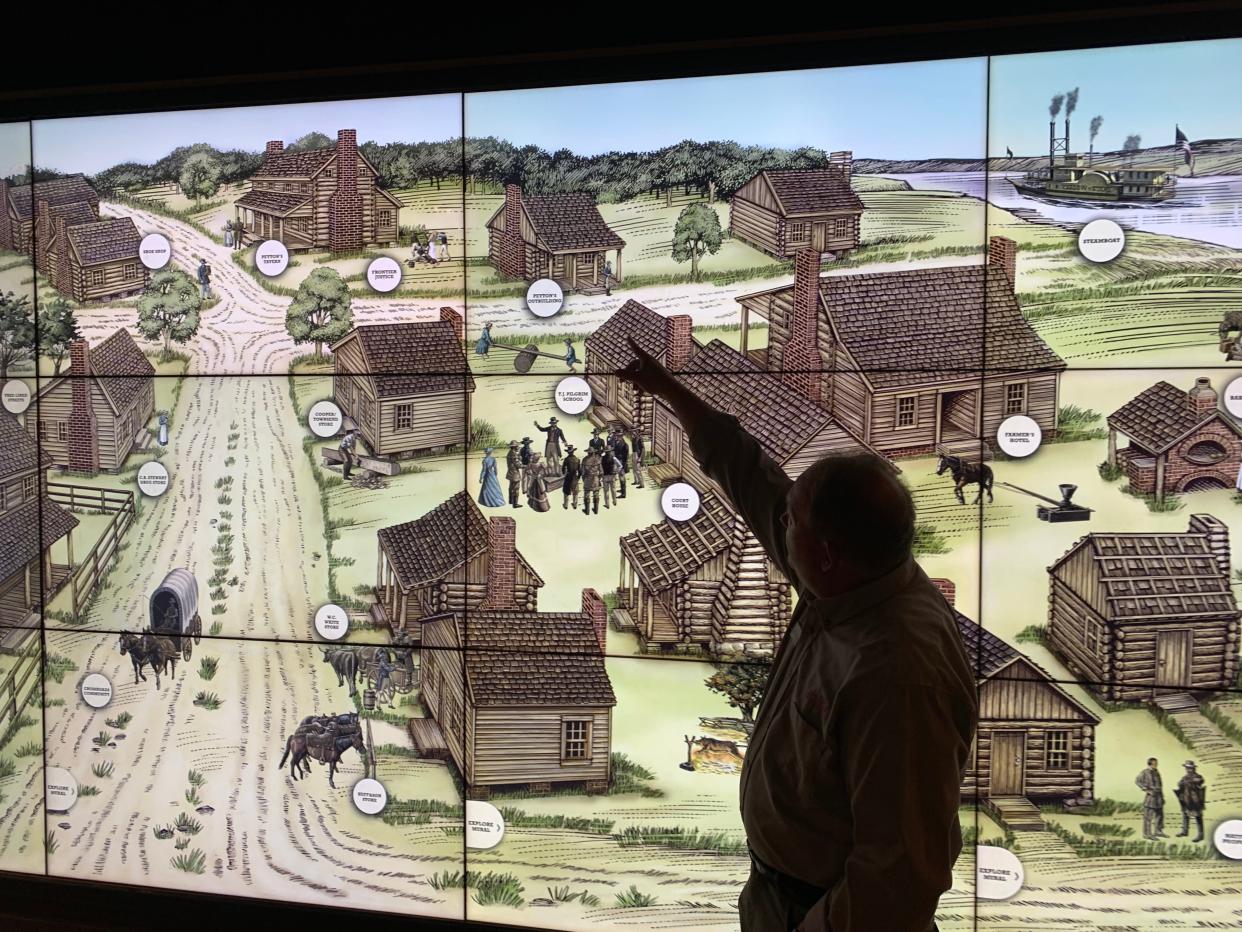
- Oops!Something went wrong.Please try again later.
- Oops!Something went wrong.Please try again later.
SAN FELIPE DE AUSTIN — How long has it been since you visited this capital of Stephen F. Austin's colony on the Brazos River?
A few things have not changed in decades: A somber memorial obelisk and graceful statue of Austin, unveiled in 1938, still stand on FM 1458 not far from Interstate 10.
Gone, however, is the old replica dogtrot cabin, informed by memories of Austin's personal cabin, that once guarded the road to nearby Stephen F. Austin State Park, a recreational oasis.
Instead, these days, a sleek, modern museum — with plenty of artifacts, maps and interactive elements — along with a village of interpretive structures that simulate frontier life, now can be visited at the San Felipe de Austin State Historic Site.
More: Guides at Texas plantation committed to preserving truth of 'a very uncomfortable history'
On Nov. 11, with talks by historians, spirited reenactments and a new historical exhibit, this site managed by the Texas Historical Commission celebrates the town's bicentennial.
It is dated to a time in 1823 when Austin declared the spot on a bluff near a river crossing as his colony's headquarters. He had first visited the future townsite in 1821 before seeking approval from the Mexican government for a colony and empresario status to sell land to qualified colonists.
Eventually, Austin brought some 1,200 families to Texas and distributed more than four million acres of land. Yet his capital did not survive the Texas Revolution against the federal government of Mexico. In March 1836, Texians set fire to San Felipe before retreating across the river to escape Gen. Santa Anna's approaching troops during a chaotic time that was called the "Runaway Scrape."
At its peak, the historical town of San Felipe was home to some 600 or so people, about a quarter of them indentured or enslaved, and ranked second in population among Texas settlements after San Antonio.
The current town of San Felipe is home to about 825 people. Its mayor, Bobby Byars, is a direct descendent of Celia Allen, a formerly enslaved cook, freed in 1832, whose kitchen and bakery remained a popular gathering place before the town was set fire in 1836.
A replica of Celia's kitchen is a marquee attraction at today's San Felipe village.
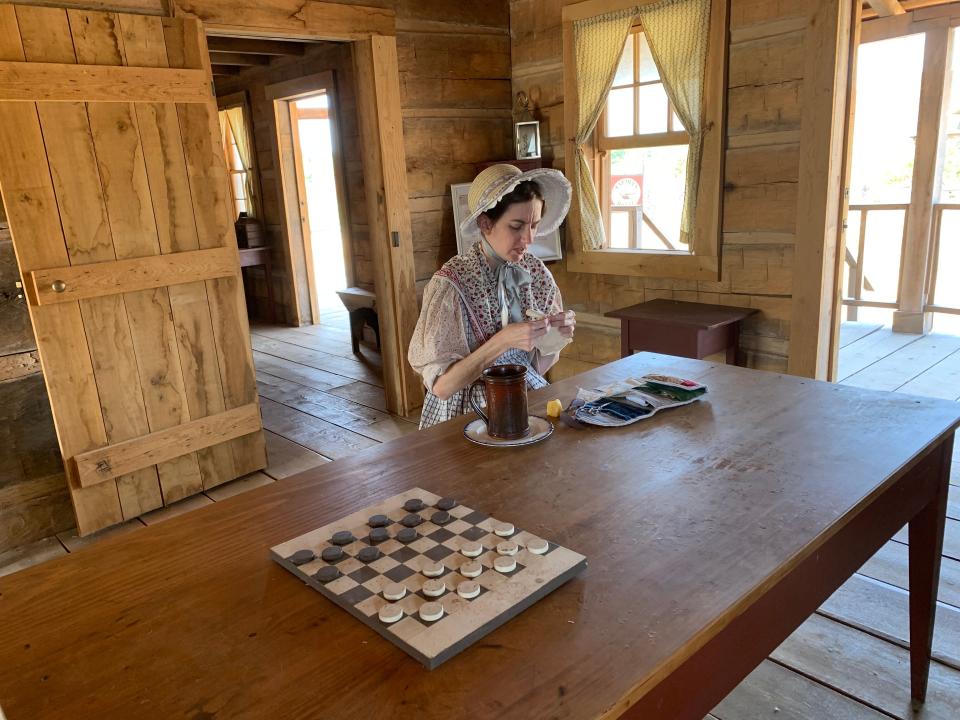
What was here before San Felipe?
Much of the history reported in this story was shared by Bryan McAuley, site manager, and Jordan Anderson, assistant site manager, as well as historian Michael Rugeley Moore, who has spent more than 25 years studying San Felipe's story and who produced a fine 85-page pamphlet on the subject.
The fertile lower Brazos River and its tributaries were home to several Native American tribes, including the Ervipiame, Karankawa, Tawakoni and Waco.
More: 'Nobody would ever find him': Stephen F. Austin wanted to retire to what is now Austin
In 1820, Moses Austin, who had accrued and lost a fortune in Spanish Missouri, attempted to receive the blessings to start a Texas colony with 300 American families. When he teamed up with the Baron de Bastrop, they won approval for the effort. Moses Austin died, however, from the effects of his travels in Missouri.
In 1821, his son, Stephen F. Austin, took up the quest. The Spanish again approved, but that year Mexico gained its independence. Colonists were already arriving from the United States while Austin spent two years befriending and lobbying Mexican officials in Mexico City. With approvals in hand, in 1823 he established his colony between the Brazos and Colorado rivers.
Interim Gov. Luciano García gave San Felipe de Austin its name, combining that of a patron saint with that of empresario Austin. It became the place where American settlers — including the "Old 300" who were the first to register with Austin — came to settle their claims.
During a land boom that has been compared to the California Gold Rush, almost all new Texas settlers funneled through San Felipe.
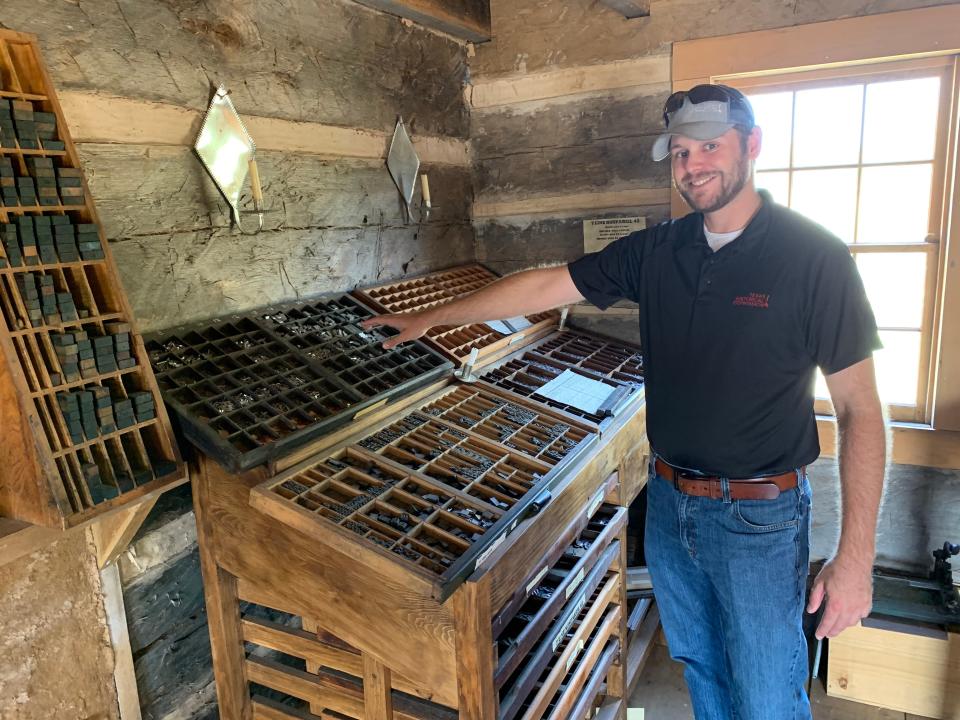
Boomtown San Felipe during the 1820s and '30s
San Felipe was a bustling boom town, mostly male, since land seekers often staked out claims before bringing their families to Texas. Among the famed residents were future Alamo commander William Barrett Travis, inventor Gail Borden, blacksmith and excellent memoirist Noah Smithwick, Archives War hero Angelina Eberly, and Robert "Three-Legged Willie" Williamson, namesake for Williamson County.
More: Texas history: Stories of old Texas told by somebody who was there
"Paradoxically, the land grants issued by the colony were the source of the village's prominence, but also the reason that the town did not blossom as Austin envisioned," Moore writes. "Austin hoped that families would settle within a few miles of San Felipe for at least several years before moving out to their dispersed grants. Some did, but many others promptly moved out to their land grants, far from the village."
Surveyors and lawyers gathered here. Delegates met periodically to discuss their disagreements with the Mexican government. And while Washington-on-the-Brazos upstream hosted the convention that declared independence on March 2, 1836, San Felipe remained the seat of government during much of the revolution.
Granted 22,000 acres over all, the "Villa de Austin," as the municipality was known in Spanish, utilized a plan that called for 320 urban acres divided into a grid of six-lot blocks with plazas set aside for the military, commerce, cemetery and government.
Buildings were constructed of logs hauled by oxen from the surrounding forests, many of them hewn in town. The first wood frame building did not go up until 1829. Most activity centered on the Land Office on Commerce Square. As more colonies and grants were established in Texas, setters arrived from the United States, Europe and the interior of Mexico.
Tejanos, who brought along their equestrian and ranching skills, clustered near José Leal's livery in "Spanish Town" on the eastern edge of town. Shops, using a prevalent credit culture, and other businesses flourished. Hides and cotton were floated down the river for export; the first steamboat, the Cayuga, did not make it that far up the Brazos until 1835.
No town or business could prosper without news, and the Texas Gazette became the first newspaper printed in the Austin colony in 1829. (One key attraction at the museum complex is a cabin with replica operational equipment.)
Although free African Americans joined Austin's colony, the 1826 census reveals that one in four in the population was indentured or enslaved.
"Most of Austin's colonists had emigrated from the American South," Moore writes. "Mexico variously allowed, discouraged and outlawed slavery in Texas, but the settlers could skirt prohibitions by creating indenture contracts with their former slaves. Functionally, most African Americans in Texas were held as slaves for life."
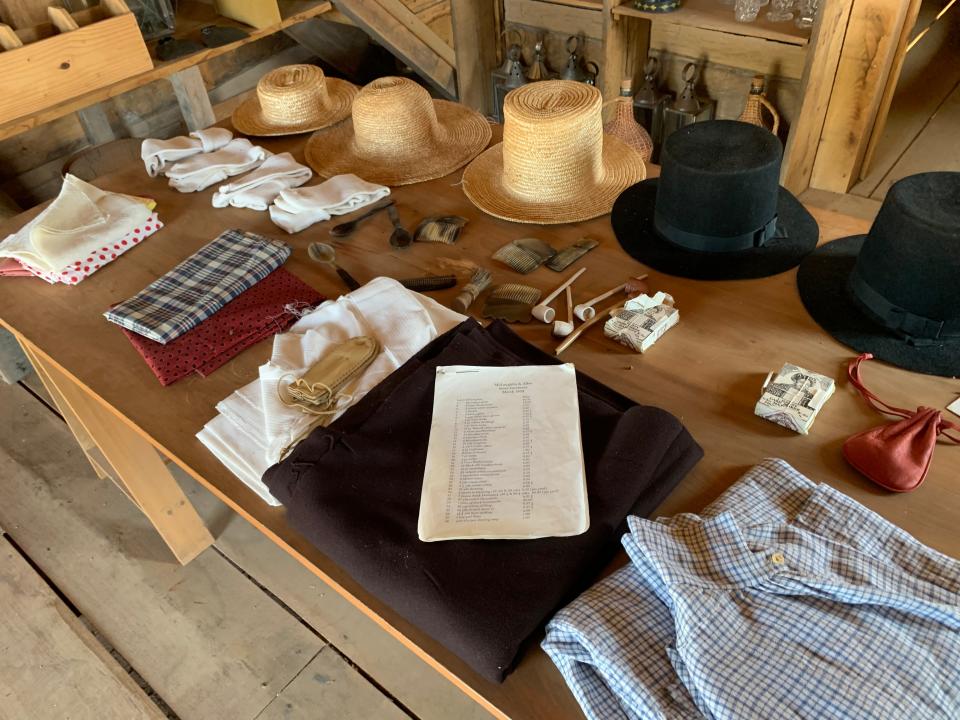
What happened to San Felipe after the 1836 fire?
"After the Battle of San Jacinto, innkeeper Angelina Peyton (later Eberly) returned to the burned landscape that had once been her San Felipe de Austin tavern," Moore writes. "Camping out under the trees, she was surrounded only by piles of broken crockery, cinders and ash. Like many, she chose not to rebuild. Instead she moved her tavern operations to Columbia and later to the new capital city on the Colorado River named after Austin."
Others returned to rebuild. The town was resurveyed and cabins sprung up. San Felipe became the seat of Austin county, but in 1848, the government moved to Bellville. While ferry boats operated on the river, the railroad bypassed San Felipe, making nearby Sealy the commercial hub of the area.
More: Texas history: Read behind the headlines from the early 1800s
In November 1928, a large gathering of descendants, children and community leaders dedicated a park to honor Austin. Interest in Texas history increased in the run-up to the 1936 Texas Centennial.
Archaeological digs increased during the 21st century at the original town site. On Jan. 1, 2008, the Texas Historical Commission took over the site. More acreage was acquired. In 2019, Texas voters approved a constitutional amendment permanently dedicating sales tax on sporting goods to parks and historical sites.
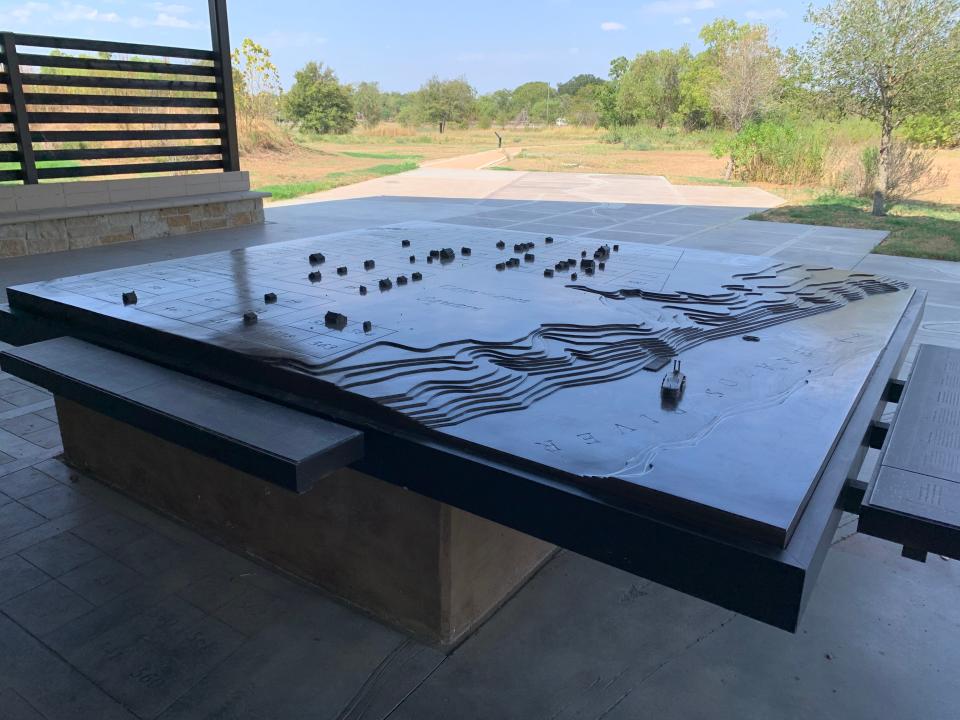
What's new at San Felipe?
In 2018, a new museum opened at San Felipe. It includes several galleries with up-to-date displays, an 1830s cabin, a small theater and large gift shop, as well as a beautiful topographical treatment of the historical town in a covered patio.
Among its treasures are a desk used by Stephen F Austin. It was discovered in 1940 in an El Paso basement crammed with rare archival documents from the period. The originals copies are at Yale University and the University of Texas. Also found here are ceramics, iron work and other artifacts discovered during digs at the original building sites to the north and west of the museum grounds.
More: Texas History: A shining shrine to the state’s past rises in Galveston
While the museum does an excellent job of describing everyday life in San Felipe, some visitors will be more attracted to the material that recounts the political evolution of the colony. A particularly instructive display allows the visitor to vote as if during a convention at San Felipe. Voting options include "independence from Mexico," but in fact most Texans at the time opted for separate statehood within Mexico under the federal format endorsed by the country's 1824 constitution.
Two years ago more attractions opened at the site: A half dozen wood structures are based on archaeological and archival evidence about the town. Employees and volunteers not only guide visitors; they also reenact the activities of the original residents. There's a hotel, a school, a courthouse and a replica of Celia Allen's kitchen. All of it is operational and there is a workshop for picking up historical practices such as farming and cooking, making clothes and guns.
While popular with history buffs, San Felipe does not yet attract the notice that it, by all historical evidence, should.
"During the Texas Revolution, it was both the seat of government and the prized target for an aggressive enemy," Moore writes. "Ultimately, its residents burned the town to the ground rather than see it provide aid to an invading Mexican army. The dramatic destruction of the town kept it from regaining its early prominence, but also create a unique archaeological record that continues to reveal the town's history."
Michael Barnes writes about the people, places, culture and history of Austin and Texas. He can be reached at mbarnes@gannett.com. Sign up for the free weekly digital newsletter, Think, Texas, at statesman.com/newsletters, or at the newsletter page of your local USA Today Network paper.
Bicentennial celebration at San Felipe de Austin
When: 9 a.m.-5 p.m. Nov. 11
Where: San Felipe de Austin State Historic Site, 220 Second St., San Felipe, Texas (about an hour west of Houston)
Cost: $5-$10
Information: thc.texas.gov/historic-sites, 979-885-2181
This article originally appeared on Austin American-Statesman: San Felipe de Austin, Stephen F. Austin's colonial capital, turns 200

